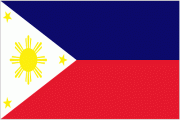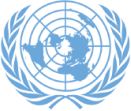Good morning. Thank you for facilitating this panel discussion which is very important for my country. I am speaking in my capacity as Assistant Secretary of the National Youth Commission of the Philippines and I wish to share a few experiences regarding the empowerment of youth affected by human-made disasters.
In May 2017, militants affiliated with ISIS laid siege to the City of Marawi in Southern Philippines and a 5-month battle between the military and the terrorists ensued. Around 360,000 people, including an estimated 160,000 youth and children, were compelled to seek refuge in other towns. Displacement and less-than-ideal living conditions have affected the psychological and general well-being of the youth in affected areas. Stress factors include lost homes and belongings, lack of food, clothing and shelter, safety and security concerns, trauma, and inability to return to school. The new and unfamiliar environment also resulted in an increased vulnerability to bullying, harassment, stigmatization and discrimination. Difficulty in accessing health, hygiene, and sanitation facilities in informal resettlements also contributed to the stress among the youth and children.
To address varying concerns, the Philippine Government created the Task Force Bangon Marawi (or the Rise Marawi Task Force) with the objective of harnessing all efforts to reconstruct and rehabilitate the city. The youth is an important component of this framework.
The National Youth Commission, as the sole policy coordinating body for the youth, is a member of the Sub Committee on Peace and Order under the Task Force. The NYC implemented programs for youth participation and empowerment through local governance and peacebuilding.
The Bangon Para sa Kabataan at Kapayapaan Program Usap Tayo Peace Education for Communities (in English, Rise for the Youth and Peace Program – Let’s Talk Peace Education for Communities) augments and assists existing peace promotion interventions by targeting youth individuals and various youth service providers as communicators of peace. Target beneficiaries are around 2,500 youth from Marawi and neighboring regions, including out-of-school youths, youth organizations and council members, and the Sangguniang Kabataan (or the local Youth Councils). The Sangguniang Kabataan (SK) is a council which represents the youth sector in each village in the Philippines. Youth leaders aged 18 to 24 years are elected by their peers to represent them and deliver youth-focused services in the barangay. It became the youth’s platform in local governance, as the body is tasked to initiate programs for the development of the youth and to establish adequate, effective, responsive and enabling mechanisms and support systems that shall empower the youth and ensure their meaningful participation in local governance and in nation-building.
The SK members and other youth volunteers were capacitated to assist in and support psycho-social services provided by professionals to displaced residents.
Youth hubs and child and youth-friendly spaces were established to provide safe spaces especially for those who are vulnerable to violence, abuse, neglect, or exploitation.
The National Youth Empowerment Training Program convened a total of 208 youths in the Cities of Marawi and neighboring Iligan to train the youth on the subject of youth empowerment and good citizenship. This program is aimed at countering discrimination and preventing extremism.
As part of solidifying youth participation on peacebuilding, the Youth Peace Table was set up to gather young peace advocates to further explore their capacities in building a culture of peace and conflict sensitivity.
Promoting the involvement and empowerment of youth in governance is one way of reducing the negative impact of man-made disasters to the youth.
In conclusion, we recommend that young people who were affected by the conflict be mentored by learned trainers and be given the opportunity to also be peer peace counsellors. To pursue this, governments should strengthen its policy on mental health consciousness, led by the Health Departments. The youth should also be equipped to contribute to disaster risk reduction and management and their know-how of technology be leveraged on. Finally, allocation of budgets could make or break youth programs. To make a difference in the lives of young people, governments should also be serious about their budget allocation for the youth.


